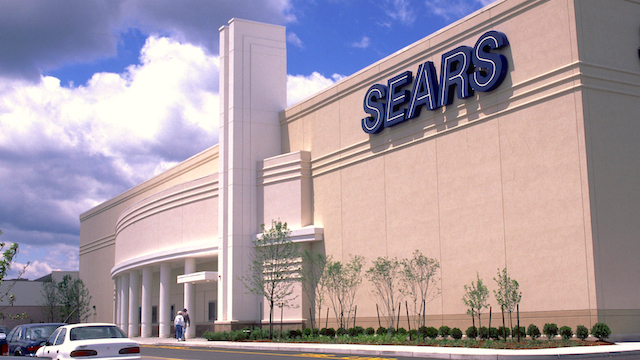Sears is like a strange rollercoaster than only ever travels in one direction – downward!
Yesterday, Sears reported a net loss of US$471 million for the first quarter of 2016 compared to a loss of $303 million in the same quarter last year.
While its latest results are not surprising, they are nonetheless disappointing in that they show no real signs of improvement since the prior quarter. Indeed, when the numbers are set against the context of the same quarter last year, when revenues declined by 25 per cent, they are incredibly soft and indicate that America’s once largest retailer is still in trouble.
We have been extremely gloomy about Sears future for quite some time: today’s more pressured outlook and dire results have only served to darken our view.
In fairness, the general retail environment, especially for department stores, was fairly unfavorable over the first quarter – but Sears’ results, especially when taking into account prior year performance, are far worse than any other player in the market. It is also notable that despite its exposure and heritage in home appliances, this was one of the main areas contributing to the decline – in spite of the fact that across retail as a whole this category grew strongly over the first part of this year. The same thing applies to the auto business, where Sears sales shrunk. More predictably, performance in apparel, footwear, and electronics were all weak.
That Sears is unable to make gains in categories which are growing, and in which it has a more established presence, highlights its main issue: it has fallen out of favour with American shoppers who continue to abandon the chain at a fairly alarming rate.
It is certainly true that the way in which consumers shop has changed and that this has, broadly, been unfavorable to department stores – but the majority of the blame for current performance must be placed fairly and squarely on Sears. In our view, the majority of stores now border on disgraceful and show a complete lack of retail standards and proper store management. The impression is of a retailer that has completely given up, and this is something consumers notice.
While there is no doubt that Sears is constrained and cannot necessarily afford to make major investments across its entire estate, it costs nothing to merchandise well, to ensure that stores are relatively clean and tidy, and to take some pride in their appearance. The average Sears shows no sign of any of these things and the result is shops that are dull, uninspiring and somewhat depressing. There is simply no excuse for such laxity, especially so in today’s highly competitive retail landscape.
Sears subsidiary Kmart is somewhat better, but even here a lack of retail standards and focus shine through. The chain has no real point of differentiation and continues to lose ground to other players in the market.
The decline in sales and extensive discounting has, once again, put pressure on the bottom line. Operating losses at both Sears and Kmart widened compared to last year, with the overall group operating loss coming in at $368 million – more than double last year’s $178 million. In a nutshell this underscores the fact that the business is well and truly broken – a fact perhaps emphasised by the departure of CFO Robert Schriesheim, who leaves under the catch-all excuse of wishing to ‘pursue other career opportunities’. While Schriesheim will remain in place for the interim, it is worrying that at this very tumultuous time Sears does not yet have a replacement.
One interesting development is the potential sale, licensing or expansion of some of Sears’ own brands outside of its own retail stores. While detail on this is sketchy, Sears is exploring options for its Kenmore, Craftsman, DieHard, Sears Home Services businesses. This, of course, may yield some additional revenue and cash, however it is something of a tacit admission that Sears doesn’t really see much potential to grow these assets within its own retail businesses. Moreover, this could represent the beginning of the end for Sears as it starts to sell off its ’family assets’ in a bid to ensure that it remains solvent over the medium term.
These potential transactions – along with the various other financial machinations Sears is pursuing to, quite legitimately, keep its head above water – entirely miss the reasons for its decline. These are all retail based and coalesce around areas such as product, stores, service, standards, and proposition. Sears has long since forgotten that it is, first and foremost, a retailer. Until and unless it starts acting like one by focusing on these fundamentals it will not arrest its long term decline.
- Neil Saunders is CEO of retail analyst Conlumino.






